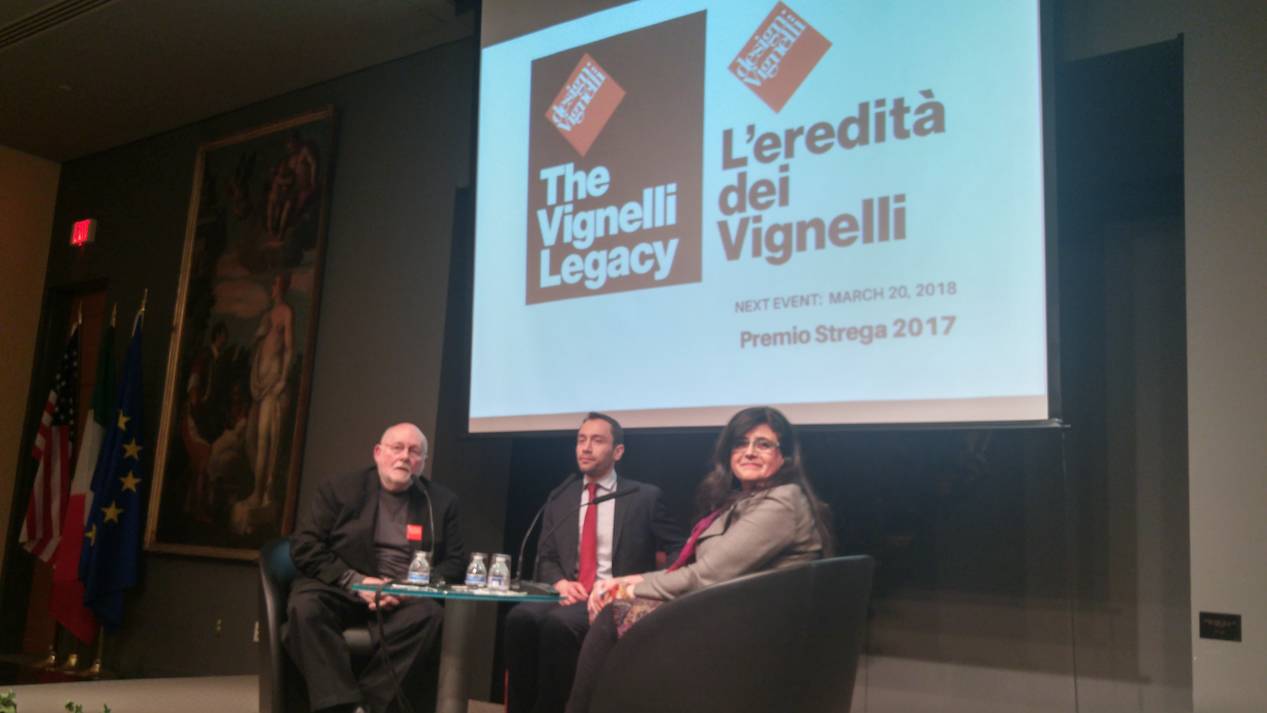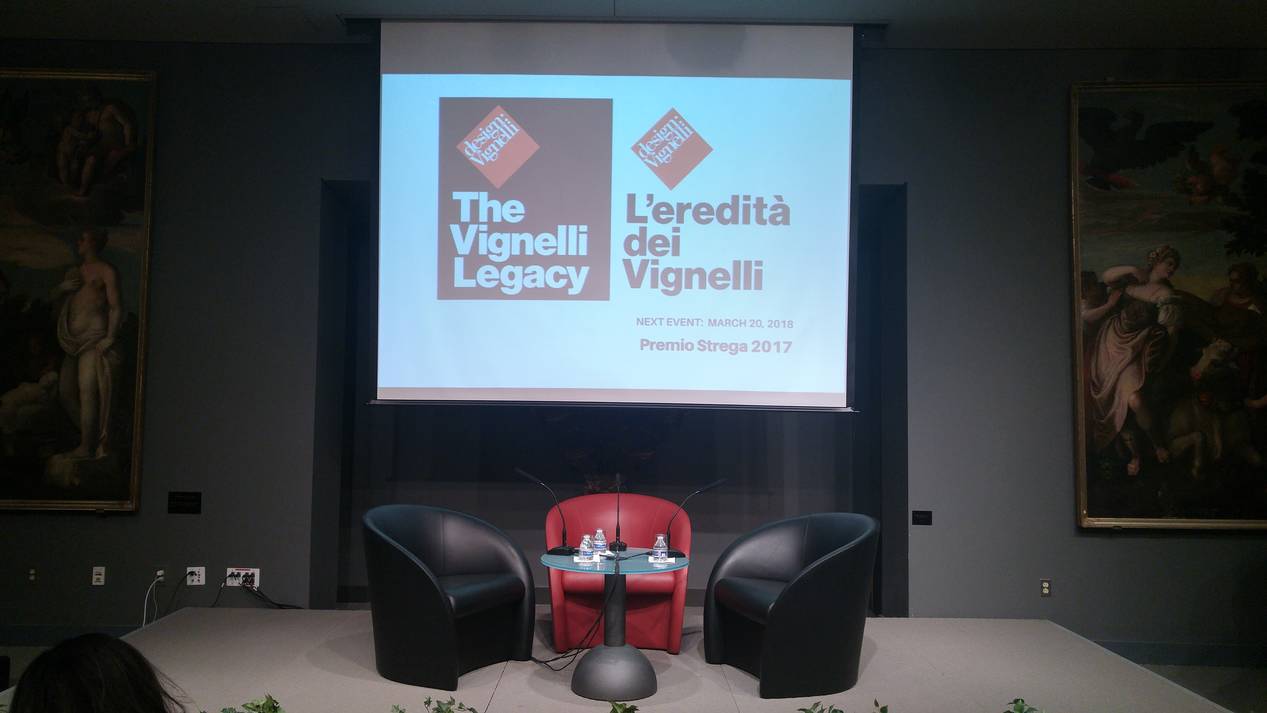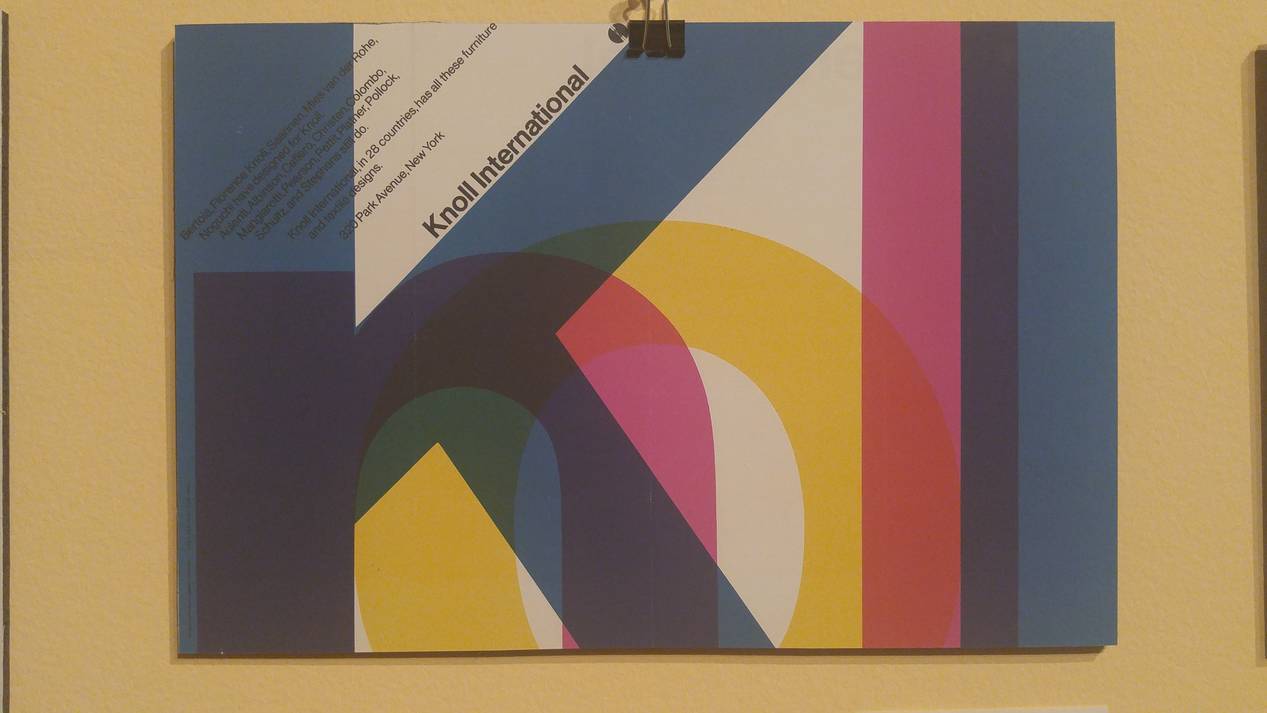Design is One: The Vignelli Legacy
Photographs, sketches, book covers, maps, and brochures lined the walls of the exhibit, demonstrating the range of media and scope their work covered. New York City and Washington, D.C.’s iconic subway maps, Bloomingdale’s department store graphics, and the interior of St. Peter’s Church in Manhattan were just a few of the well-known designs the Vignelli’s created. Furniture, plate ware, clothes, jewelry, books on animal anatomy and brochures for the U.S. National Parks, all seemingly unconnected items, came together in the exhibit on Massimo and Lella Vignelli. Even the chairs and coffee table on the stage were Vignelli-designed.
R. Roger Remington, Professor of Graphic Design from the Vignelli Center for Design at the Rochester Institute of Technology, spoke as a long-time friend during his lecture. He recalled Massimo Vignelli’s quirks, such as when he began his career at Unimark International in Chicago after studying in Milan and Venice. Vignelli had all of his employees dress in white lab coats, because “just as a patient goes to a doctor to get better, a client goes to a designer so the designer can make them better.”
Remington also recalled the deep love and respect Massimo had for Lella. He was frustrated by the lack of respect Lella received from contractors, and that newspaper accolades failed to mention her contribution to their work. Massimo believed that the list of successful women in architecture and design was too short.
Professor Elisabetta d’Amanda, also from RIT, spoke about Lella Vignelli’s role and her experience as a woman in design. There was clarity and simplicity in Lella’s work - for her there was “no room for meaningless design.” She was busy as both a mother and a designer, and “she did all this and did it so well,” according to Massimo. Professor d’Amanda shared more of Massimo’s reflections on Lella, such as how she was “a role model for all women in professional contact with her.”
In the almost 60-year span that Massimo and Lella Vignelli spent together designing, Remington emphasized the passion and joy both brought to their work. The title of the book Design is One could have many meanings. After all, the pair was talented at designing so many different products. The concept of “design is one” derived from Bauhaus, a German art school that Massimo Vignelli referenced often, according to Remington. Vignelli Associates was a unified creative endeavor that could design anything.
The exhibit is on display at the Italian Embassy until April 29 at the Embassy of Italy in Washington, D.C.









































i-Italy
Facebook
Google+
This work may not be reproduced, in whole or in part, without prior written permission.
Questo lavoro non può essere riprodotto, in tutto o in parte, senza permesso scritto.